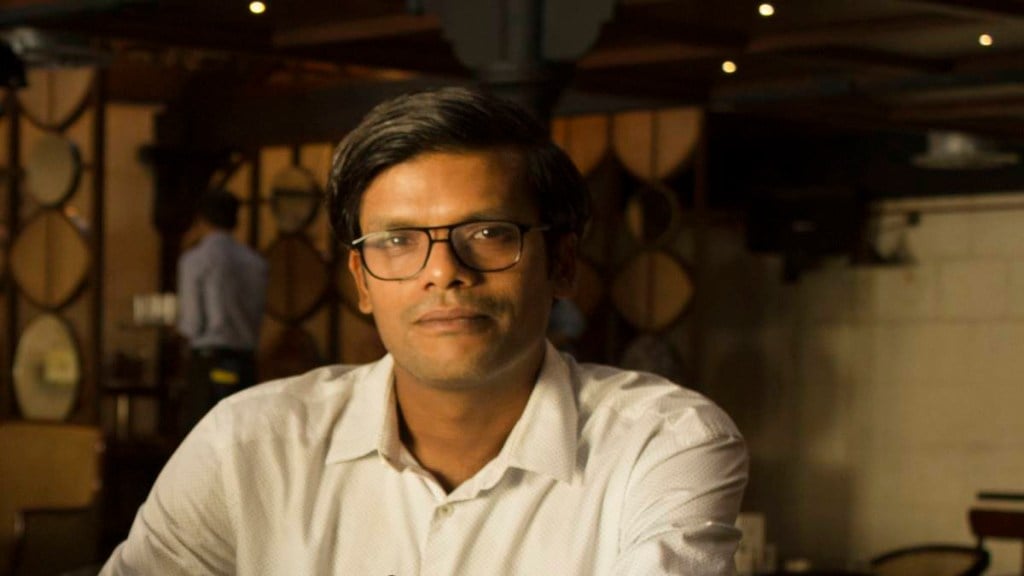Be it a hotel or a restaurant, the first thing that attracts a guest is the interiors. If the place looks good, has a comfortable feel and vibes, people would prefer it. The food, hospitality, and everything else follows. Keith Menon, the co-founder of Spiro Spero understand the same and believes in promoting sustainability in every possible way. We got in touch with him to understand more about his journey from writing for famous television serials to designing properties, his vision, his USP, and more. Excerpts from the interview:
How did your journey of designing properties start? From writing for iconic serials and films to architecture, how did the transition happen?
The journey of designing properties started unexpectedly when we stepped in to assist a friend whose architect had left them in a bind and then, something wonderful happened: another person came across our project, fell in love with it, and reached out to us, asking if we could work our design magic on their spaces as well. And the requests just kept coming, one after another.
Our big break came when Hotelier Anjan Chatterjee saw ‘’The Little Door’’, our first project which remains one of the best places and then we worked together to create “Hoppipola” across India for them. After that, we enjoyed it so much that we continued doing it.
What changed?
I switched from writing for movies and TV to architecture because, back then, there were no streaming platforms or OTTs. The big studios controlled everything, so it was hard to come up with new and exciting stories, and the content was restricted to what the large studios controlled.
So, it was impossible to get any fresh content in, though now the scene has changed, but you never know when and if I may get back to writing.
What made you choose the name?
Spiro Spero is an excerpt from a Latin phrase which in its complete form is Dum Spiro Spero. Loosely translated it means “while I breathe, I hope”. We always wanted to create social spaces. Homes are limited to a few and come with too many walls. Bars, Restaurants, Hotels, Cafes, etc. all are communal spaces. It’s where people congregate in celebration of something – even the everyday. In the future, we hope to work towards building public spaces and collaborating with neighborhoods, governments, and other groups and individuals to build open public spaces. So, the goal is to create spaces that allow people to come take a calm deep breath and feel positive, in whatever little way possible – each day a new person will use that space – and that continues to drive us.
How did Spiro Spero start? What was the first project you worked on?
Spiro Spero’s first project was actually a digital artwork collage for a friend for their new house. It started with the idea that we wanted to be structured with the work we did, not as freelancers. We wanted to build a team and scale up. The first project in terms of architecture was “The Little Door” in Andheri.
You believe in building properties without disturbing nature. Please elaborate.
In the kind of field that we are in, there is a lot of damage that happens to nature. You have to destroy a lot of things to build a house, a hotel, a restaurant, or a bar. The amount of destruction that happens to build one space is phenomenal.
Now while that can’t be avoided, and that is the way of the world, the least we can do is be responsible and acknowledge the fact that a lot of nature is destroyed for this. So how can we build sustainably, reuse stuff, and salvage as much as we can while we are at it? If things can’t be used, then store them for another time when they could be used versus dumping them in scrapyards.
Because I grew up in nature, it is imperative for me that whatever we work on, we make sure that we try to be as diligent and careful as possible, versus being wasteful and chucking things here and there. Just because someone doesn’t want the flooring, you’ll change the marble again, and then you’ll change the marble again when someone else moves into that space.
The idea is to try and find smarter ways to use them, without having to get more mountains cut or more mines made.
What does sustainability mean to you?
Sustainability means everything to us. Honestly, in the end, I think it’s acknowledging where the materials, the things that you are using as your mediums, and all your tools, where they come from. all the resources you use to build it, whether it’s electricity or anything else.
The idea is one to acknowledge everything and two to be aware that while using it, you have to do it responsibly.
Thirdly, is to ensure that whatever you build is long-lasting and does not require too much sustenance and too much maintenance in a way that damages or has to be thrown or chucked away In essence, sustainability for us is a holistic approach that encompasses these principles.
What’s your USP? What makes you stand out?
Our USP is that we design for the client. We don’t design for ourselves. We design in a way that is more like conscious design; that is, you are working towards building as ethical a practice as possible.
You’re learning each time and improving from that. Not to monetize your business but rather to make sure that you are sustainable in your practices. We are not a money-driven company; we are a conscience-driven company, and we love doing what we do. Because we want to continue what we do, and so we try to do it as sustainably and responsibly as possible.
You stay away from the limelight. Why?
We choose to stay away from the limelight because we believe that good work leads to better opportunities. We also value the peace of not constantly answering calls and managing everything ourselves. Being in the spotlight all the time can be frustrating. Excessive publicity doesn’t yield much beyond more publicity.
When you consistently deliver good work, it opens doors to even better opportunities, setting the stage for future greatness.
Our core belief has always been that the quality of our work naturally attracts attention, allowing us to focus more on our craft and less on extensive marketing efforts.
How do you help local artisans and communities?
One, we don’t buy any imported elements in our design. We try and make all of it here itself. We don’t have Chinese furniture on our sites. We don’t have Chinese lights on our sites.
So, we try and make sure we are getting everything made here with local artisans and skilled personnel. And also collaborating with anyone who has worked with communities, or who is trying to work with communities, or who is trying to lift them up – by purchasing things from them.
We also try and employ local labour as much as possible. While our core team is set, all of the additional teams, we try and see if we can get things done locally ideally.
7 things to keep in mind while decorating your new house
1: Don’t make too many fixed things; don’t fix everything onto walls, etc., because that gives you less flexibility to keep redecorating your house, and you have to keep doing new things.
2: Try and make sure you have first thought of how you are going to use it and how you are going to use everything.
3: Keep in mind that you are decorating for yourself and not for your guests. So whenever you come into the house, you should feel at peace, and you should feel like it’s your safe space.
4: If you are a person who keeps redecorating your house, then don’t buy too many expensive things.
5: A lot of your redecorating can happen yourself if you have the right kinds of tools. A lot of them are available on online platforms. A basic hammer and drill kit will help you do things faster and cheaper.
6: Opt for low-maintenance plants to keep your home green and vibrant with minimal effort.
7: Avoid anything that is not extremely sustainable. See if you can recycle stuff.
Can you describe a particularly challenging project you’ve worked on in the past and how you overcame the challenges?
Kaia Goa would have been a challenging project to work on, considering the limited amount of space, the expectations of the client in terms of what they wanted in that limited amount of space, and the fact that it is on the seashore. So, the construction of it itself, since a lot of it is vertical, was extremely difficult because water keeps coming up.
We overcame the challenges through, I think, a lot of trial and error.
Can you provide an example of a project where you implemented sustainable design principles effectively? What were the key sustainable features of that project?
Circle, a 150+-year-old property in Goa, is one of the projects that exemplifies sustainability and Spiro Spero’s commitment to protecting the environment. We undertook the construction using a significant number of reused materials, demonstrating our dedication to eco-friendly practices.
The entire property was constructed using fallen trees from a 2017 storm and stones from the property itself. Any structures that were demolished were repurposed within the property, ensuring that no debris was generated. These materials were creatively used for boundaries and fencing. We incorporated sustainable features such as solar geysers and responsible water usage. Most of the wood used in the project was sourced locally from fallen trees, contributing to our sustainable design principles.
At Circle, our sustainability efforts extend beyond construction. We implemented various initiatives related to water, electricity, waste disposal, composting, and natural fertilizers. We made a conscious effort to plant native and tropical plants, avoiding species that could pose problems for the local flora and fauna.
We prioritized the preservation of wildlife habitats. This involved leaving ample animal pathways and maintaining sufficient foliage to allow animals to move freely within the property. We also strived to preserve as many trees as possible, providing a resource for local wildlife to forage for leaves and fruit.
Through these sustainable practices, we successfully implemented environmentally conscious design principles at Circle.
In a world where architecture and technology are becoming increasingly intertwined, how do you envision the role of augmented reality (AR) and virtual reality (VR) in the future of architectural design and client engagement?
I think it’s going to be like photography, where because the client will enter some keywords and get some AI-generated photograph or video, they are going to think that it is as easy to do that in real life.
Unless we move to complete 3D printing, then I don’t think too many clients, there will be a need for too many architects because anyway a lot of people design their own homes and spaces unless it’s commercial spaces that require heavy-duty compliance.
I think It is going to be very complicated rather than easier, cause everyone is going to have an AI-generated opinion or thought.
I don’t think people understand the real parameters that need to be fed in, to get the right kind of result and output that is actually doable with the current available technology in the world. However, if 3D printing started at a larger scale, then anything is possible.
What’s next?
We have ongoing projects in Thailand and India. Some of them are hotels, and some are bars. We’re also using smart technology (AI and VR) in one project and focusing on being eco-friendly in another.
In the future, we aspire to create spaces that go beyond the ordinary, places like schools or hospitals, where the well-being of people and the planet take center stage. It’s an exciting journey, and we’re eager to see how it all unfolds!







